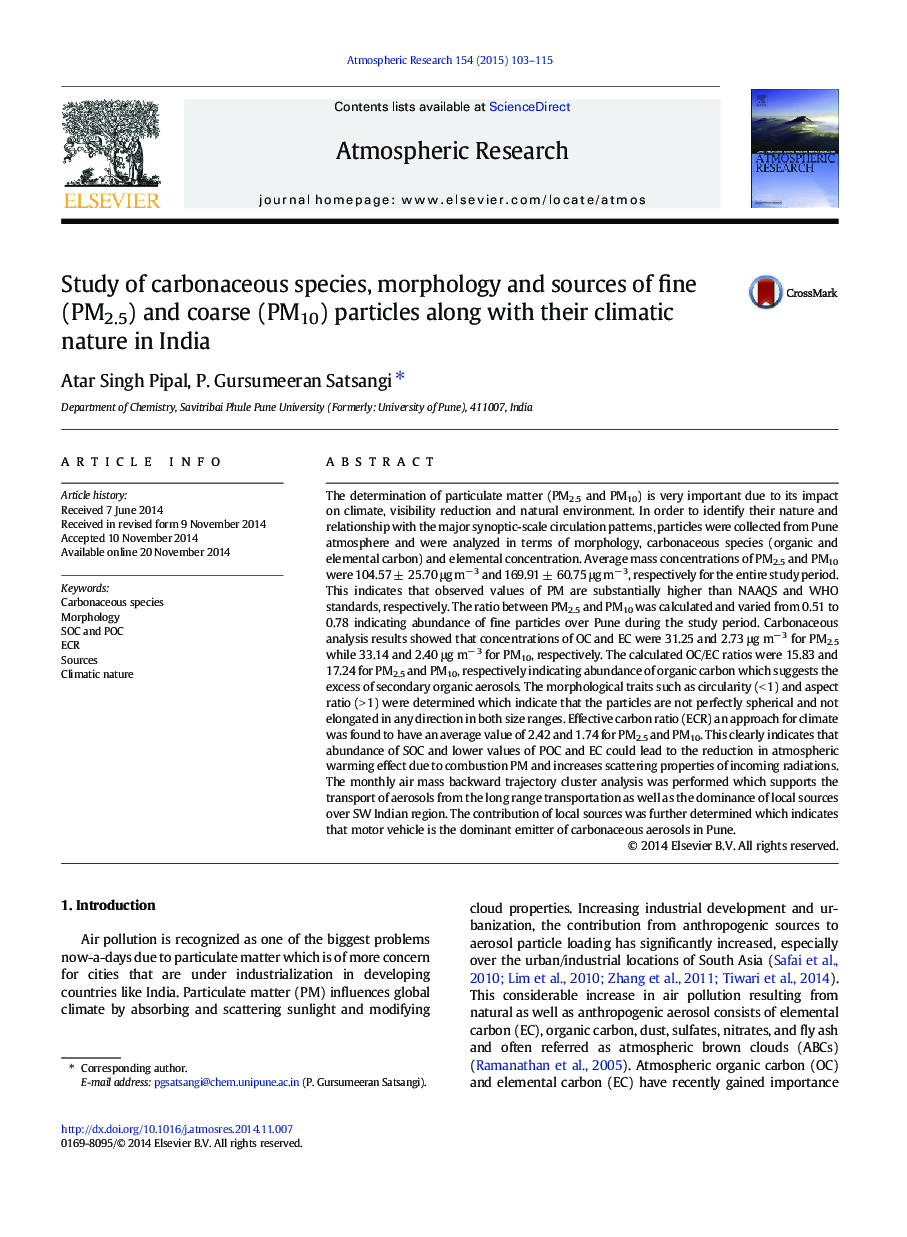| Article ID | Journal | Published Year | Pages | File Type |
|---|---|---|---|---|
| 4449850 | Atmospheric Research | 2015 | 13 Pages |
•Characterization of PM2.5 and PM10 in terms of morphology and elemental composition•Identification of particles on the basis of morphology and elemental composition•Determination of primary (POC) and secondary organic aerosols (SOAs)•Proportion of OC functional groups associated with carbonaceous aerosols•Climatic nature and sources of chemical constituent associated PM over Pune, India
The determination of particulate matter (PM2.5 and PM10) is very important due to its impact on climate, visibility reduction and natural environment. In order to identify their nature and relationship with the major synoptic-scale circulation patterns, particles were collected from Pune atmosphere and were analyzed in terms of morphology, carbonaceous species (organic and elemental carbon) and elemental concentration. Average mass concentrations of PM2.5 and PM10 were 104.57 ± 25.70 μg m− 3 and 169.91 ± 60.75 μg m− 3, respectively for the entire study period. This indicates that observed values of PM are substantially higher than NAAQS and WHO standards, respectively. The ratio between PM2.5 and PM10 was calculated and varied from 0.51 to 0.78 indicating abundance of fine particles over Pune during the study period. Carbonaceous analysis results showed that concentrations of OC and EC were 31.25 and 2.73 μg m− 3 for PM2.5 while 33.14 and 2.40 μg m− 3 for PM10, respectively. The calculated OC/EC ratios were 15.83 and 17.24 for PM2.5 and PM10, respectively indicating abundance of organic carbon which suggests the excess of secondary organic aerosols. The morphological traits such as circularity (< 1) and aspect ratio (> 1) were determined which indicate that the particles are not perfectly spherical and not elongated in any direction in both size ranges. Effective carbon ratio (ECR) an approach for climate was found to have an average value of 2.42 and 1.74 for PM2.5 and PM10. This clearly indicates that abundance of SOC and lower values of POC and EC could lead to the reduction in atmospheric warming effect due to combustion PM and increases scattering properties of incoming radiations. The monthly air mass backward trajectory cluster analysis was performed which supports the transport of aerosols from the long range transportation as well as the dominance of local sources over SW Indian region. The contribution of local sources was further determined which indicates that motor vehicle is the dominant emitter of carbonaceous aerosols in Pune.
